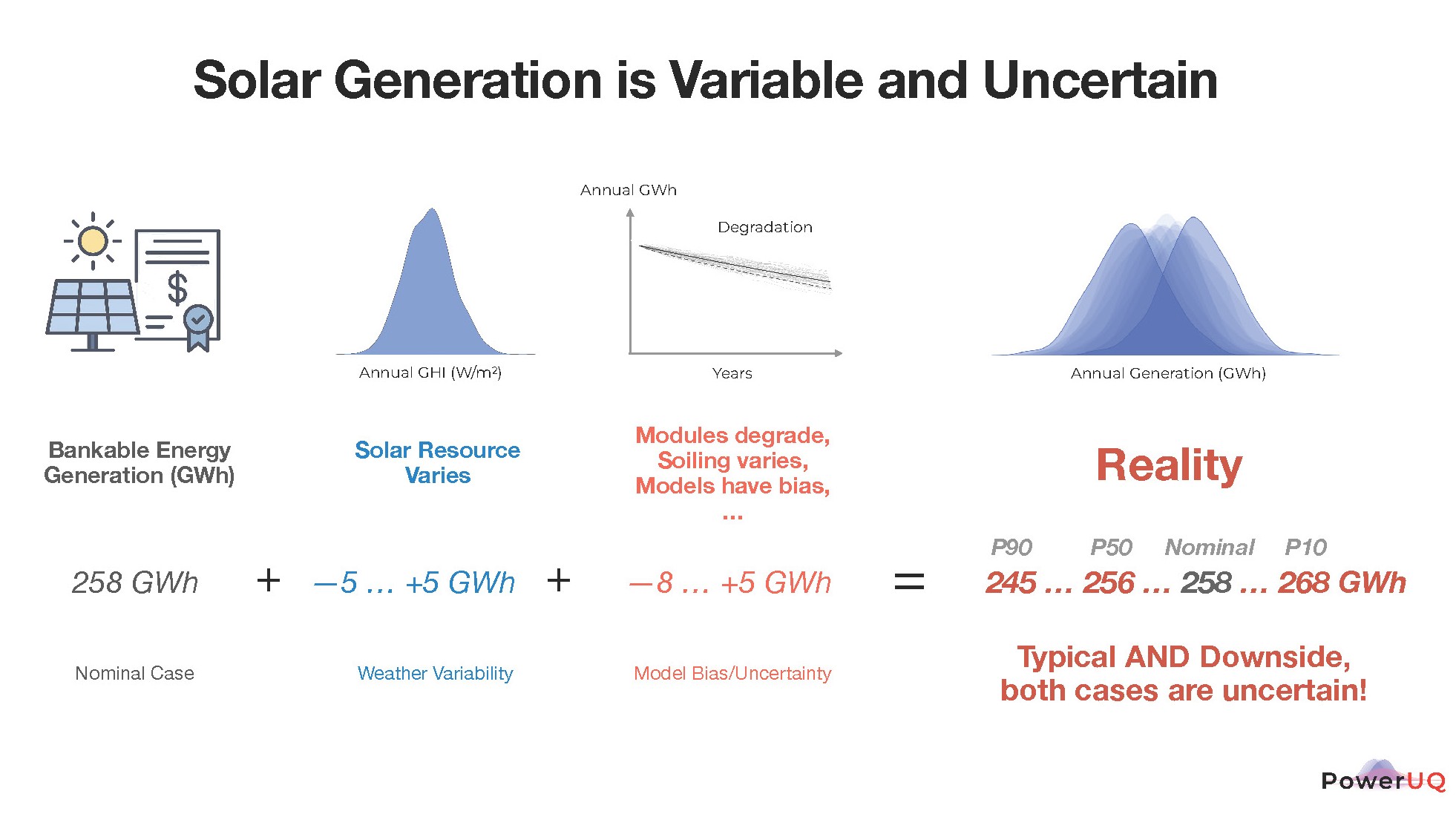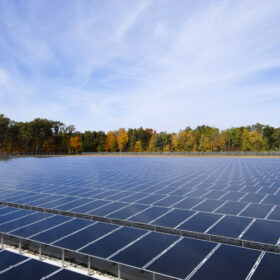U.S. Secretary of Defense Donald Rumsfeld famously talked about “unknown unknowns” when analyzing potential enemy actions. Similarly, British statistician George Box is credited with the observation: “All models are wrong, but some are useful.” In both cases, the moral is that uncertainty is the reason some seemingly informed decisions result in bad outcomes.
According to Chetan Chaudhari, co-founder and CEO of California-based renewable energy services firm PowerUQ, failing to account for many of the variables contributing to a solar project’s performance leads to unmet expectations and lost revenue. The company aims to apply the principles of uncertainty quantification (hence, UQ) to solar project analytics to make forecasts more useful.
Chaudhari, who has a background in data science at renewable energy companies, told pv magazine USA that he has long been bothered by what he calls the industry’s simplistic view of solar forecasting and generation modeling, both on the scientific and financial sides.
“Wells Fargo did a study that showed that the solar performance index is skewed by quite a significant percentage, like six-and-a-half percent on average,” Chaudhari said. “So, the portfolio is performing six-and-a-half percent lower than expected. That’s a lot of money. And why is this happening?”
The culprit, Chaudhari believes, is uncertainty. Generally, widely used solar forecasting and generating models do not incorporate a huge range of factors into their calculations. By and large, he says, energy modeling tools focus on short-term forecasts that primarily use historical weather data and solar equipment performance databases. While these can be very accurate for the first year or so, their accuracy degrades over time. This is a significant discrepancy over the 20-30-year lifespan of a PV project.
Mark Campanelli, co-founder and chief technology officer at Power UQ, told pv magazine USA that uncertainty has many sources but from a solar perspective these can be separated into uncertainty in weather conditions and in equipment performance. Campanelli, who has a background in mathematics and software engineering, said his post doctorate work at the U.S. National Institute for Standards and Technology and the National Renewable Energy Laboratory led him to the conclusion that only by studying the underlying causes of uncertainly could solar models be made more accurate.
“It’s hard to always know what all those interactions are,” he said. “Sometimes large uncertainties have smaller effects than you might expect, whereas small uncertainty can still have cascading effects in a very complicated system that produce significant results.”
As an example, Campanelli said, PV projects tend to be a little overbuilt because there is expectation that they will degrade over time. As a result, there is a lot of AC clipping of power output when production exceeds a certain level. That’s generation capacity being paid for that’s not producing income.
“Our software can capture that asymmetry in output,” he said. “So, the question is, is that interaction or that model non-linearity worth capturing? In that particular case, I do think it’s significant.”

Chaudhari and Campanelli collaborated on a report for the PV Performance Modeling Collective at Sandia National Laboratories examining types of uncertainty and risk strategies for managing it. A key point was that aleatoric (random) uncertainty and epistemic (systemic) uncertainty must be factored into solar performance models.
The authors cited El Niño weather patterns as an example of random uncertainty, where the severity of a year’s event and subsequent effects on generation cannot be known with accuracy. Systemic uncertainties include knowledge about a module’s rated power or inverter performance, which may deviate from manufacturer information. The latter types of uncertainty can be plumbed with testing, improved measurement techniques, data collection, equipment calibration and more sophisticated modeling, the report said.
While dealing with random uncertainties is necessarily more difficult, the authors said UQ techniques can be applied to produce a more useful model. One method is to produce multiple scenarios modeling median risk: a P50 scenario (50% probability of meeting or exceeding predicted annual generation in a given year) and a downside P90 scenario (90% probability of meeting or exceeding expected generation). For example, a 100 MW solar project produces 290 GWh in a P50 scenario but in a P90 estimate would be a more conservative 250 GWh.
Different ratios of scenario probabilities may be modeled according to the stakeholder’s requirements. The point is that UQ addresses uncertainties that might otherwise reduce the effectiveness of solar models and skew financial decision-making.
Of course, many asset owners have come do expect a more-or-less definitive number in their forecasts, not a range of probabilities. Nevertheless, Chaudhari said, potential owners will come to find a range of probabilities more useful, particularly if they have been burned by more simplistic models in the past.
“We built PowerUQ to give people the tools that they need to do these calculations,” he said. “If you have the information about the equipment you’re using, data from the weather providers that you have chosen, and the historical precedence of how your projects have performed, you can use that information to your advantage and close the loop on the things that are causing the shortfall in your portfolio.”
In practice, Chaudhari said, UQ analysis can help ensure a developer’s next project is based on better assumptions. Also, data from a new or mid-life project can provide some precedence to correct previously forecasted assumptions for more realistic assessments of its remaining service life.
This content is protected by copyright and may not be reused. If you want to cooperate with us and would like to reuse some of our content, please contact: editors@pv-magazine.com.









By submitting this form you agree to pv magazine using your data for the purposes of publishing your comment.
Your personal data will only be disclosed or otherwise transmitted to third parties for the purposes of spam filtering or if this is necessary for technical maintenance of the website. Any other transfer to third parties will not take place unless this is justified on the basis of applicable data protection regulations or if pv magazine is legally obliged to do so.
You may revoke this consent at any time with effect for the future, in which case your personal data will be deleted immediately. Otherwise, your data will be deleted if pv magazine has processed your request or the purpose of data storage is fulfilled.
Further information on data privacy can be found in our Data Protection Policy.